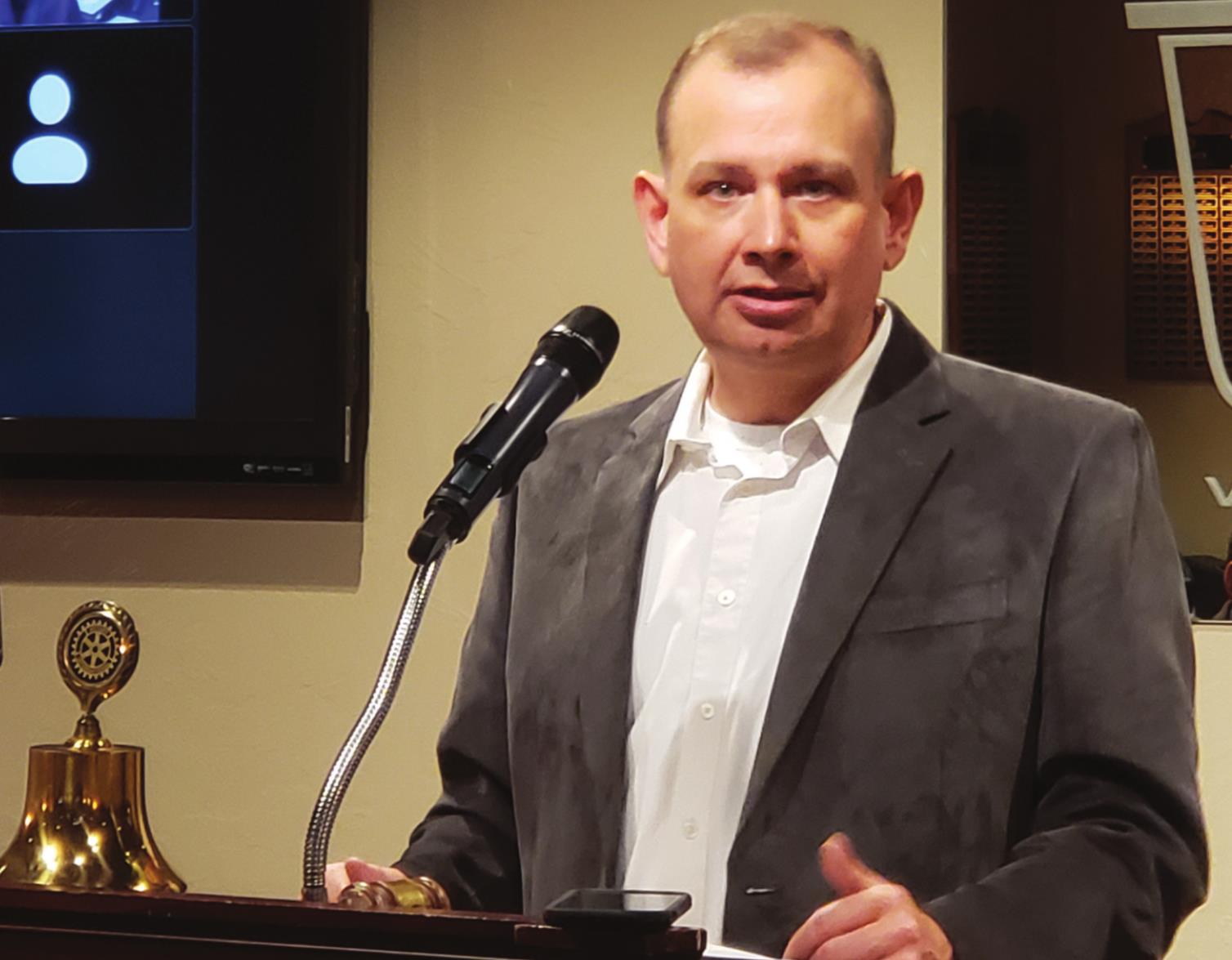Mark Gower, director of the Oklahoma State Department of Emergency Management and Homeland Security, said the department is there to help local governments and first responders deal with disaster, even before they happen.
Oklahoma currently is third in the nation for federal disaster declarations, and Gower has experienced his fair share of incidents since becoming head of the department nearly 2 years ago.
“I walked in my first week to a large wildfire followed by the third largest flood the northeastern part of our state has ever seen,” he said. “I also have been through 147 tornadoes, which set a record for the state and then when we thought we could take a break, here come COVID-19.”
OEMHS’s mission is “to help minimize the effect of disasters, emergencies and terror attacks upon the people of Oklahoma.”
At any one time, OEMHS is managing more than $100 million in federal program grants and has about 1,350 active projects from city, county and tribal jurisdictions across the state. Because federal dollars always have several strings attached, Gower said the department will help jurisdictions from application to audit to ensure everything is done properly.
The department has five distinct phases of disaster management:
• The Preparation
• The Disaster
• The Response
• The Recovery
• Hazard Mitigation
Preparation
OEMHS maintains, updates and exercises the State of Oklahoma’s emergency operations plan as well as managing the emergency operations center, which is nicknamed “the football.” It also has several function support partners such as the Department of Human Services, Oklahoma National Guard and Oklahoma Highway Patrol.
The department also helps more local jurisdictions make their own emergency plans. The Homeland Security side of the department helps make plans for terrorist attacks and responses.
Disaster
Throughout large-scale state disasters, OEMHS keeps state authorities informed on the situation while removing barriers to getting additional aid. This may come in the form of waiving weight and licensing requirements on tucks so out-of-state organizations, or even local ones, can provide support.
For smaller scale disasters, the department has a 24/7 watch officer who can contact and manage emergency aid so first responders can focus on containing the situation. Gower said local agencies tell the department what they need and will utilize state resources to meet those needs.
Response
Gower said every disaster is local because the emotional and economic impact varies by community. As part of their response, the county emergency management director is critical to organize aid and care for displaced residents as well as look for federal aid.
To receive FEMA assistance, a disaster declaration needs to be made at the local and state level. However, no matter the local cost, the state threshold to receive FEMA assistance must exceed $6.3 million.
The total can include damage to buildings, roads, bridges, drainage systems and equipment. The department also activates agencies who have mutual assistance agencies with the area in need.
Recovery
Once FEMA does declare a disaster for the event, OEMAHS will work to finalize damage estimates. FEMA will fund up to 75-percent of the cost to put the damaged areas back the way they were before the event.
The department also brings assistance from voluntary organizations active in disasters such as the Red Cross, Salvation Army and Baptist Men’s Disaster Relief. These organizations bring in clean-up crews, place survivors and treat the injured. These organizations also travel out-of-state with OEMAHS.
Hazard mitigation
OEMHS also manages FEMA hazard mitigation program, which are very competitive since funds are limited. These funds are used to prevent future disasters by making roads, bridges and building safer.


